 Facebook
Facebook
 X
X
 Instagram
Instagram
 TikTok
TikTok
 Youtube
Youtube

Marcos lived for months at the Hotel San Francisco, on Calle Primera, across from La Funeraria San Martin. His room was littered with Argentine novels and Communist literature from Latin America. The hotel was clean, cheap. Walk down the hall, doors open behind you, and guests observe your passage down the hall. You spend many nights at this hotel. In your own small green room, you will listen to the cathedral nearby ringing each hour.
By Abe Opincar, Feb 25, 1988 | Read full article
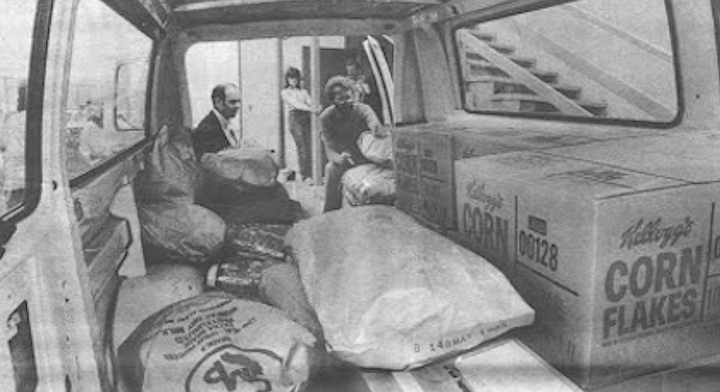
Forty infants, each in a separate crib, were awakening from naps and taking bottles. Suckling, gurgling, cooing, burping, baby laughter resonated across the one-hundred-foot-long room. The madres, dressed in ankle-length gray-and-white cotton habits, walked quietly. They nodded to us and smiled. The room smelled of talcum powder and warm milk. Mary lifted out a baby who had emptied his bottle. She leaned back into one of the four rocking chairs, the baby against her sweatshirt.
By Judith Moore, June 9, 1983 | Read full article
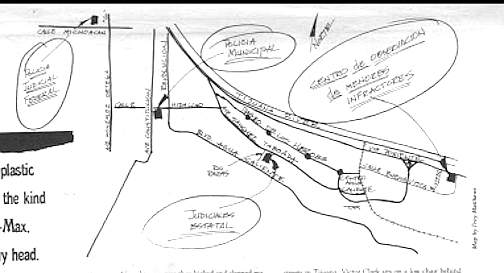
“They hit me in the bathrooms of the [judicial police] office. They grabbed me by the shoulders and kneed me in the chest, and they lifted me up and punched me in the stomach. They slapped me a lot and kicked me in the legs and shins. In the bathroom they took a water hose, a tube, and turned on the water and put it up my nose and left it on for a minute.”
By Abe Opincar, June 14, 1990 | Read full article
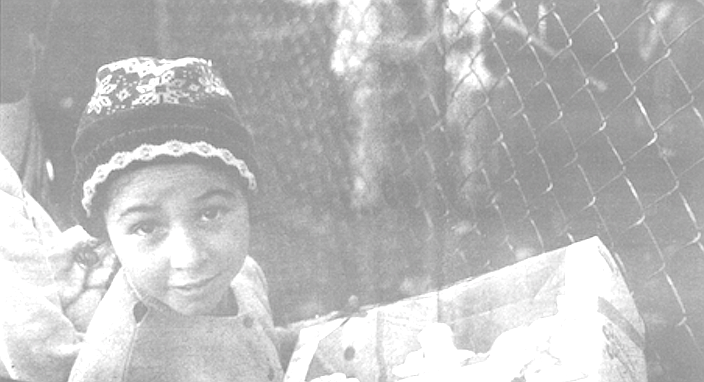
14 people have died of the cold in Tijuana. Eight babies died of exposure on Christmas Eve alone. A desperate 24-year-old prostitute, faced with a newborn baby she couldn’t care for, wrapped it up, put it in a box, and stuffed the box in a trash can near the Tijuana bus terminal. Fortunately for the baby, someone heard it crying and lifted the lid of the can. The woman is being sent to prison for three years.
By Luis Urrea, March 7, 1991 | Read full article
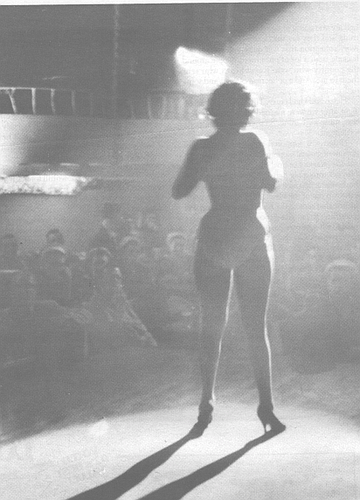
There are the languid, middle-class Mexican couples out for a mild thrill. There is the perilous bar filled with courtesans looking for a casual kill. There are the small-time bosses, cement nabobs and refrigeration barons in their topaz cuff-links and string ties. And there, at odd tables, are the spreads of ice buckets, half-hacked lobsters, and bottles of Taittinger, laid on for his belle by some balding tycoon of the Tijuana construction boom.
By Lawrence Osborne, March 26, 1992 | Read full article
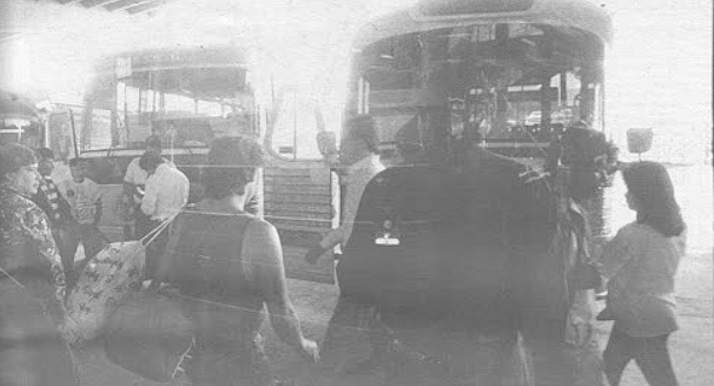
“Don’t let them tell me the bus is new. Of course, we always get there on time; it’s just on the way there are, well, complications. It’s in the nature of the route. God didn’t intend a road through here — look around you. If you stopped for an hour, the forest would eat you. Now, Nature takes care of these things. All these people hurtling to the north: it’s madness.”
By Lawrence Osborne, Apr. 2, 1992 | Read full article
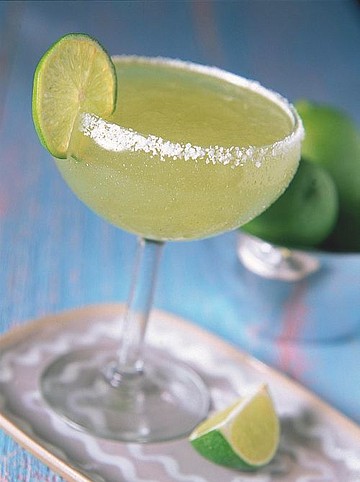
“Now, I first visited Tijuana and Ensenada in 1937 and spent a lot of time there in the late ’30s and the ’40s, when I was working for CBS in Los Angeles. I first encountered the margarita cocktail around 1940, and I’ve watched its whole progress as it made its way up Baja and into California. Back in the ’30s and ’40s, Americans did not drink cocktails — bourbon, scotch, rye whiskies were what Americans drank.”
By Margot Sheehan, May 21, 1992 | Read full article
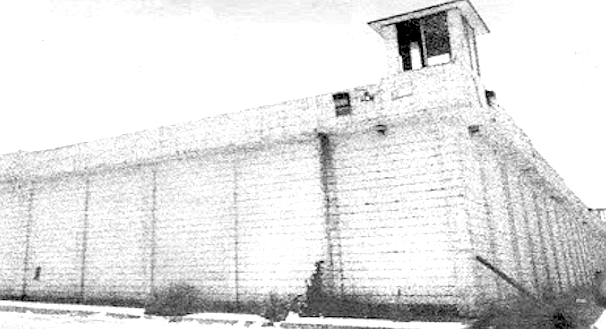
The guy who did the shooting was taken to Las Tumbas. The comandante interviewed him personally. He told the comandante that he expected to spend the rest of his life in the Tombs, and there was no way he was giving up his Uzi. He will do better than most guys there. The guards and the other prisoners respect him. The last time I saw him, he had the first cell in the Tombs all to himself.
Anonymous, June 25, 1992 | Read full article
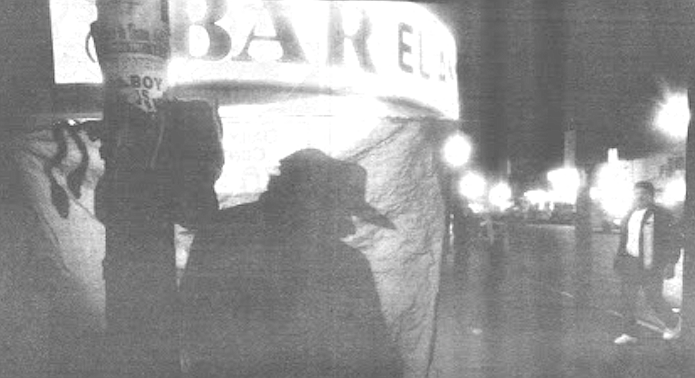
The banana trees in the yard bore fruit; the trapezoidal neighbor’s house refused to fall; Margo developed a marvelous skill for talking to birds — she could make them land on her fingers. Ernesto James ran out of bullets. Tijuana’s Christmas decorations got fancier year by year, then grew old and faded and tattered. Margo moved away. Her mother moved away. The second-story dogs grew old and died. The tortilla shop’s women were replaced by a machine.
By Luis Urrea, Oct. 8, 1992 | Read full article
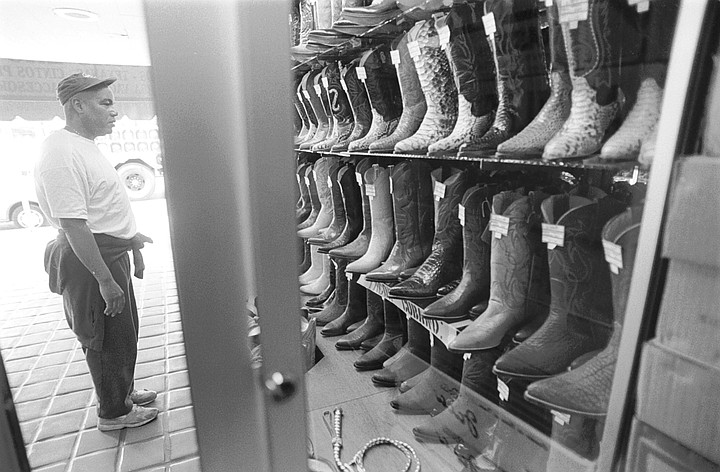
He sees me fondling a pair of alligator boots and points out that they aren’t really alligator. “Right, Umberto?” Umberto agrees that alligator is too expensive and that the leather is imprinted, or stamped, with the alligator pattern. He turns to his mother. In Spanish he asks her if that isn’t right, that the pattern is stamped by machine? She nods and makes a pulling gesture with her arm to indicate a punch-press machine action.
By John Brizzolara, Oct. 15, 1998 | Read full article
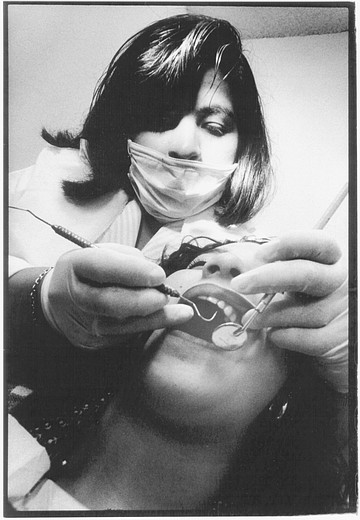
In the middle of the room sat a reclining dentist’s chair with leaking upholstery, one of those giant dental klieg lights. A poster of some swimsuit model, the kind of poster you’d expect in an auto mechanic’s garage. The only other features in the room were an unmade single bed, a dirty plate on the floor from breakfast — looked like eggs, tortillas, and beans — and five empty Carta Blanca bottles situated around the room like hollow sentinels.
By John Brizzolara, April 29, 1999 | Read full article


Marcos lived for months at the Hotel San Francisco, on Calle Primera, across from La Funeraria San Martin. His room was littered with Argentine novels and Communist literature from Latin America. The hotel was clean, cheap. Walk down the hall, doors open behind you, and guests observe your passage down the hall. You spend many nights at this hotel. In your own small green room, you will listen to the cathedral nearby ringing each hour.
By Abe Opincar, Feb 25, 1988 | Read full article

Forty infants, each in a separate crib, were awakening from naps and taking bottles. Suckling, gurgling, cooing, burping, baby laughter resonated across the one-hundred-foot-long room. The madres, dressed in ankle-length gray-and-white cotton habits, walked quietly. They nodded to us and smiled. The room smelled of talcum powder and warm milk. Mary lifted out a baby who had emptied his bottle. She leaned back into one of the four rocking chairs, the baby against her sweatshirt.
By Judith Moore, June 9, 1983 | Read full article

“They hit me in the bathrooms of the [judicial police] office. They grabbed me by the shoulders and kneed me in the chest, and they lifted me up and punched me in the stomach. They slapped me a lot and kicked me in the legs and shins. In the bathroom they took a water hose, a tube, and turned on the water and put it up my nose and left it on for a minute.”
By Abe Opincar, June 14, 1990 | Read full article

14 people have died of the cold in Tijuana. Eight babies died of exposure on Christmas Eve alone. A desperate 24-year-old prostitute, faced with a newborn baby she couldn’t care for, wrapped it up, put it in a box, and stuffed the box in a trash can near the Tijuana bus terminal. Fortunately for the baby, someone heard it crying and lifted the lid of the can. The woman is being sent to prison for three years.
By Luis Urrea, March 7, 1991 | Read full article

There are the languid, middle-class Mexican couples out for a mild thrill. There is the perilous bar filled with courtesans looking for a casual kill. There are the small-time bosses, cement nabobs and refrigeration barons in their topaz cuff-links and string ties. And there, at odd tables, are the spreads of ice buckets, half-hacked lobsters, and bottles of Taittinger, laid on for his belle by some balding tycoon of the Tijuana construction boom.
By Lawrence Osborne, March 26, 1992 | Read full article

“Don’t let them tell me the bus is new. Of course, we always get there on time; it’s just on the way there are, well, complications. It’s in the nature of the route. God didn’t intend a road through here — look around you. If you stopped for an hour, the forest would eat you. Now, Nature takes care of these things. All these people hurtling to the north: it’s madness.”
By Lawrence Osborne, Apr. 2, 1992 | Read full article

“Now, I first visited Tijuana and Ensenada in 1937 and spent a lot of time there in the late ’30s and the ’40s, when I was working for CBS in Los Angeles. I first encountered the margarita cocktail around 1940, and I’ve watched its whole progress as it made its way up Baja and into California. Back in the ’30s and ’40s, Americans did not drink cocktails — bourbon, scotch, rye whiskies were what Americans drank.”
By Margot Sheehan, May 21, 1992 | Read full article

The guy who did the shooting was taken to Las Tumbas. The comandante interviewed him personally. He told the comandante that he expected to spend the rest of his life in the Tombs, and there was no way he was giving up his Uzi. He will do better than most guys there. The guards and the other prisoners respect him. The last time I saw him, he had the first cell in the Tombs all to himself.
Anonymous, June 25, 1992 | Read full article

The banana trees in the yard bore fruit; the trapezoidal neighbor’s house refused to fall; Margo developed a marvelous skill for talking to birds — she could make them land on her fingers. Ernesto James ran out of bullets. Tijuana’s Christmas decorations got fancier year by year, then grew old and faded and tattered. Margo moved away. Her mother moved away. The second-story dogs grew old and died. The tortilla shop’s women were replaced by a machine.
By Luis Urrea, Oct. 8, 1992 | Read full article

He sees me fondling a pair of alligator boots and points out that they aren’t really alligator. “Right, Umberto?” Umberto agrees that alligator is too expensive and that the leather is imprinted, or stamped, with the alligator pattern. He turns to his mother. In Spanish he asks her if that isn’t right, that the pattern is stamped by machine? She nods and makes a pulling gesture with her arm to indicate a punch-press machine action.
By John Brizzolara, Oct. 15, 1998 | Read full article

In the middle of the room sat a reclining dentist’s chair with leaking upholstery, one of those giant dental klieg lights. A poster of some swimsuit model, the kind of poster you’d expect in an auto mechanic’s garage. The only other features in the room were an unmade single bed, a dirty plate on the floor from breakfast — looked like eggs, tortillas, and beans — and five empty Carta Blanca bottles situated around the room like hollow sentinels.
By John Brizzolara, April 29, 1999 | Read full article
Comments